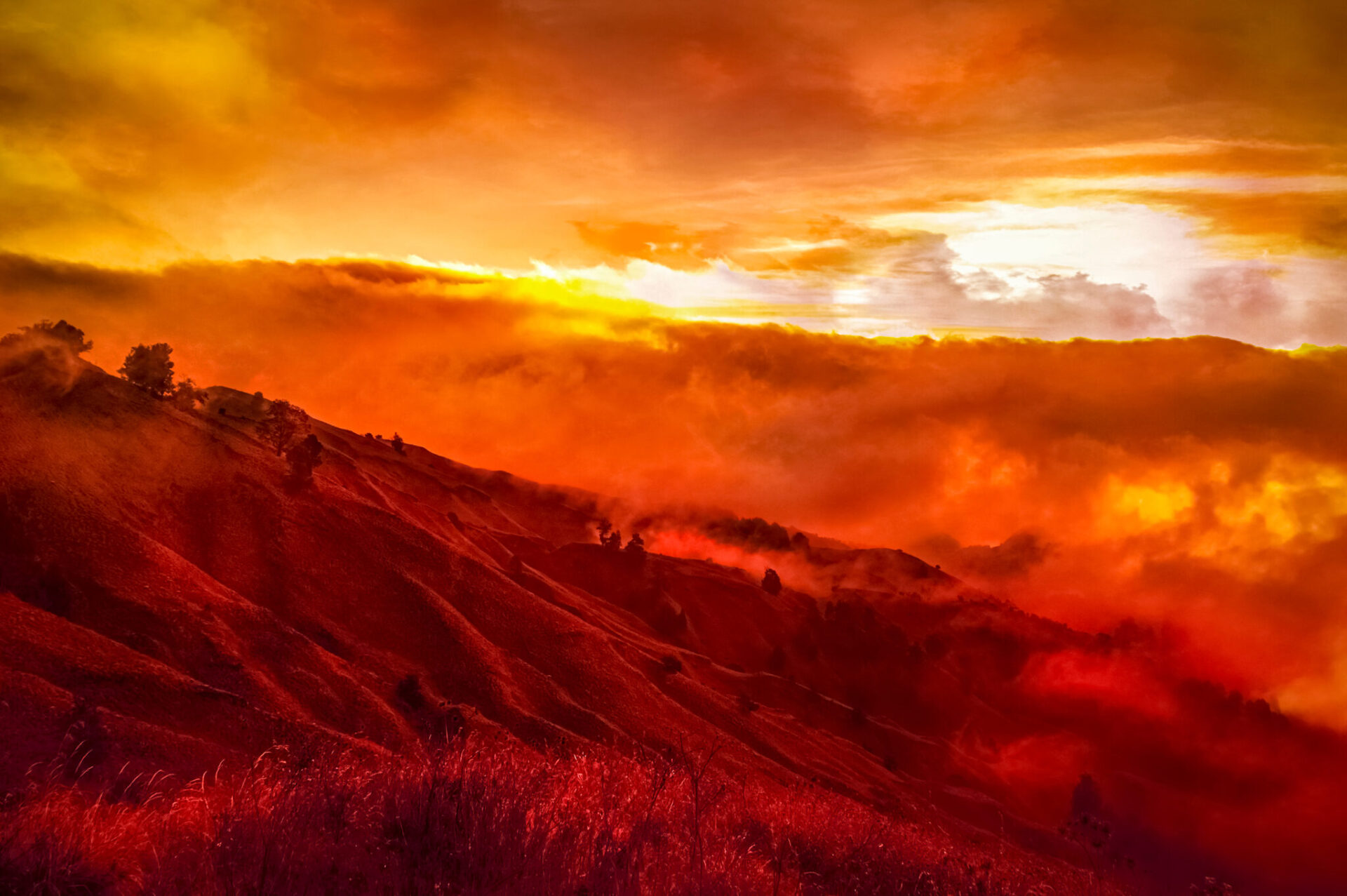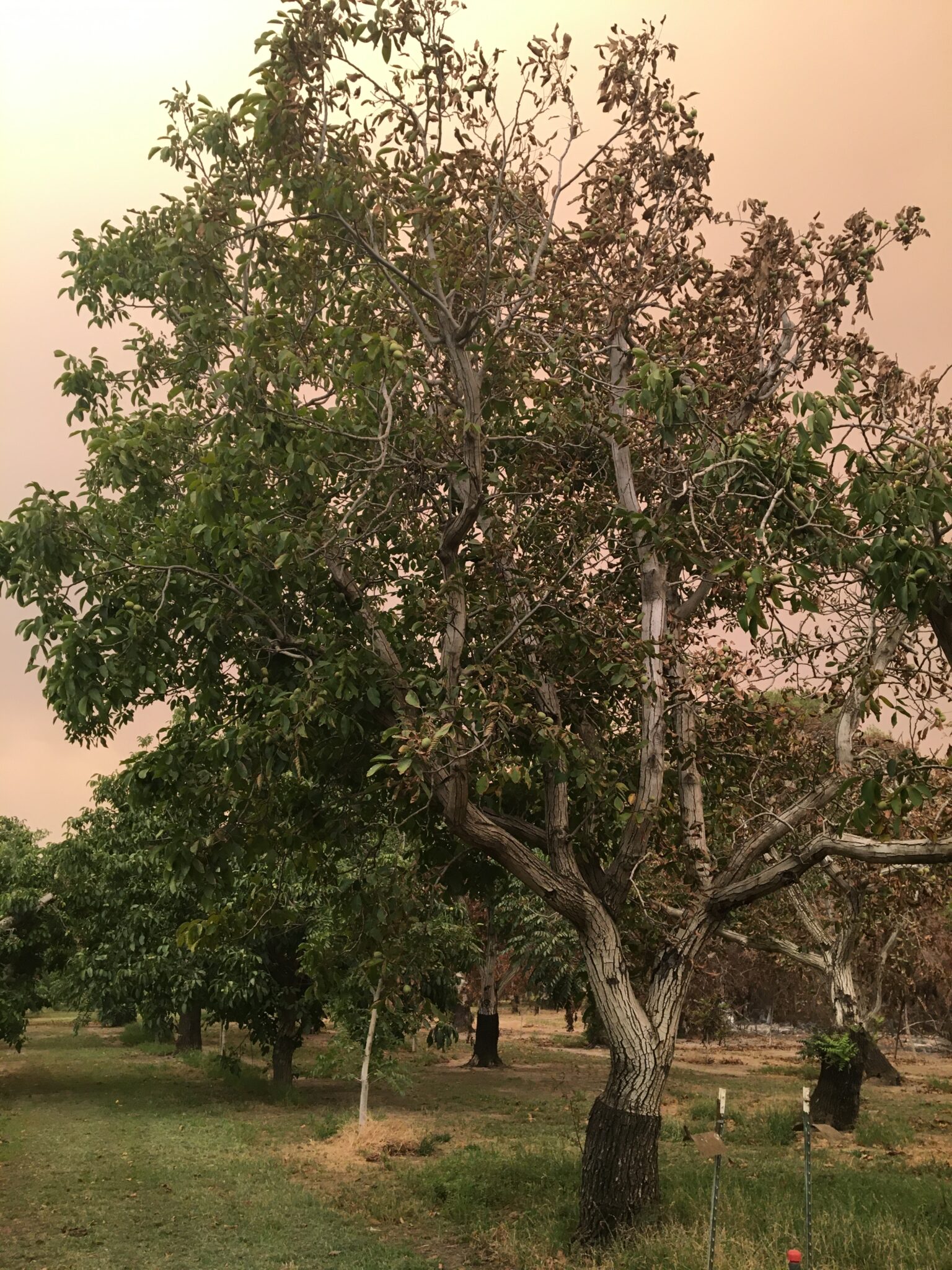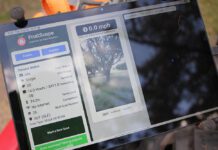
When the LNU Lightning Complex wildfire scorched the outside rows of some walnut orchards around Pleasants Valley Road last August, it marked the rare occurrence when a California nut crop suffered direct loss from a wildfire.
Unlike in avocado orchards, where wildfire damage is common, California nut orchards generally escape direct damage from wildfires. It is the smoke, not the flames, that is the biggest issue in California nut crops.
“The biggest impact of these wildfires is the smoke pollution and the impact that has on sunlight getting through to the crop,” said Katherine Jarvis-Shean, orchard systems advisor for Sacramento, Solano and Yolo counties.
Wildfire smoke can inflict long-term physical damage on trees, can alter irrigation needs by changing evapotranspiration in orchards and, perhaps most worrisome, can delay dry down of almonds during harvest.
“My understanding is that last year, there were incidences where there were almonds on the orchard floor that were relying on sunlight to dry out that were not drying out,” Jarvis-Shean said.
“People kept waiting to pick them up and send them to a processor, and some even resorted to picking them up anyway even though they weren’t at ideal humidity, which involved some other drying steps along the way.”
In some cases, producers spread out almonds in the hopes of speeding dry down; in others, producers turned piles over as a conditioning tactic to bring wetter almonds to the top of piles, two tactics available to try and reach ideal humidity.
“There are a few little tools that we can use to help improve things,” Jarvis-Shean said. “But you can’t get smoke out of the air, so a lot of the impacts you are just stuck with.”
Tree Loss Minimal
Actual tree loss to wildfires over the years has been minimal, according to Ben Faber, Ventura County advisor for UCCE, primarily because nut crops are grown on large expanses typically far from the rangelands and forests that provide fuel for California wildfires. “You might see marginal burns that burn down a dry creek bed, but nothing like in avocados,” he said.
“Avocado orchards burn every year, and they have done so historically, because of their location. The same is true for several of the citrus orchards. It is something growers have learned to live with,” Faber said.
Applying mulch to orchards and keeping trees adequately watered are important fire-prevention steps regularly employed in avocados, Faber said. “Most plants, if they are adequately watered, are not very fire susceptible, and so that is one of the things they do. And avocado orchards are thick with mulch, a foot deep sometimes. It gets moist in there, and when you get embers falling into it, it burns really slowly. The orchardists can just take a shovel and whack it out.”
In nut crops, however, where orchard floors generally are kept clean and crops are dried down at harvest, the mitigating steps taken in avocado orchards often aren’t feasible. Where fire is a concern, steps like creating defensible spaces devoid of vegetation can be key to minimizing risks, Jarvis-Shean said. But, here again, in many cases, that is not possible, particularly with orchards often planted right up to property lines.
“I certainly saw some instances (last year) where folks were turning over soils that had dead grass on them many yards out from where their trees were situated so the fire wouldn’t have a fuel source near their orchard line,” she said. “But that isn’t something that everyone has available to them. In many cases it is someone else’s property or it is government land adjacent to an orchard.
“But when possible, you want a defensible space, just like you would for a house in a fire-prone area,” she said.

Wait-and-See Approach
In cases where trees are singed by wildfire, Jarvis-Shean advised growers to take a wait-and-see approach before replacing them. Many of the walnut trees singed by the LNU Lightning Complex fire, for example, are expected to recover.
“Trees are more resilient than you might think,” Jarvis-Shean said.
“Generally, you want to approach it the same way that you would freeze damage,” she said. “You want to slice into the tree a little bit to see if there is dead tissue underneath to see if it is burned all the way through, not just the water pipes or sugar pipes of the current year, but the cambium, which is sort of the stems cells that are going to make sugar and water pipes in the future. If those are scorched and destroyed for more than a third of the circumference of the tree, then that tree is probably not going to be worth much more of your time.
“But often buds will emerge the following year later than they would in a normal year, and you might still have more budbreak than you expect. As far as the singeing on the edges, we recommend a wait-and-see approach before doing anything really dramatic,” she said.
The effect of smoke pollution on trees is still largely unknown, Jarvis-Shean said, but researchers believe the potential exists for long-term negative impacts.
“We don’t have a great understanding of what that impact is,” Jarvis-Shean said. “But, when you get all sorts of junk in the air, and the trees are taking that junk into their stomata and trying to make sugars with it through photosynthesis, there is good reason to think that it might not be great for our orchards.
“We know that when you have a similar cocktail in urban settings, through smog and pollution, that can be detrimental to urban trees,” she said.
In regard to the effect of smoke on evapotranspiration, Jarvis-Shean said growers should keep an eye on whatever metrics they use to determine water needs to prevent over-watering.
“Sometimes, having that much smoke in the air, because of that light-filtering effect, decreases the evapotranspiration in the orchard, and that can catch people off guard,” Jarvis-Shean said. “That is one thing that people lose track of a little bit sometimes, the need to dial that irrigation back, because the tree is using less water. So, keeping that in mind, when skies are smokier, it can be important to watch whatever metrics you have for water use, like sensors in the soil or plant-water stress sensors, rather than just going through the motions.”
One other step to keep in mind in regard to wildfires, Jarvis-Shean said, is to document damage.
“Depending on the fire and how the government adapts to it, there are a number of assistance programs that may or may not kick in,” she said. “So, you should really do a good job of documenting the damage on a month time basis and certainly right after it happens so that you have documentation for insurance claims and for any federal assistance that may be available.”















